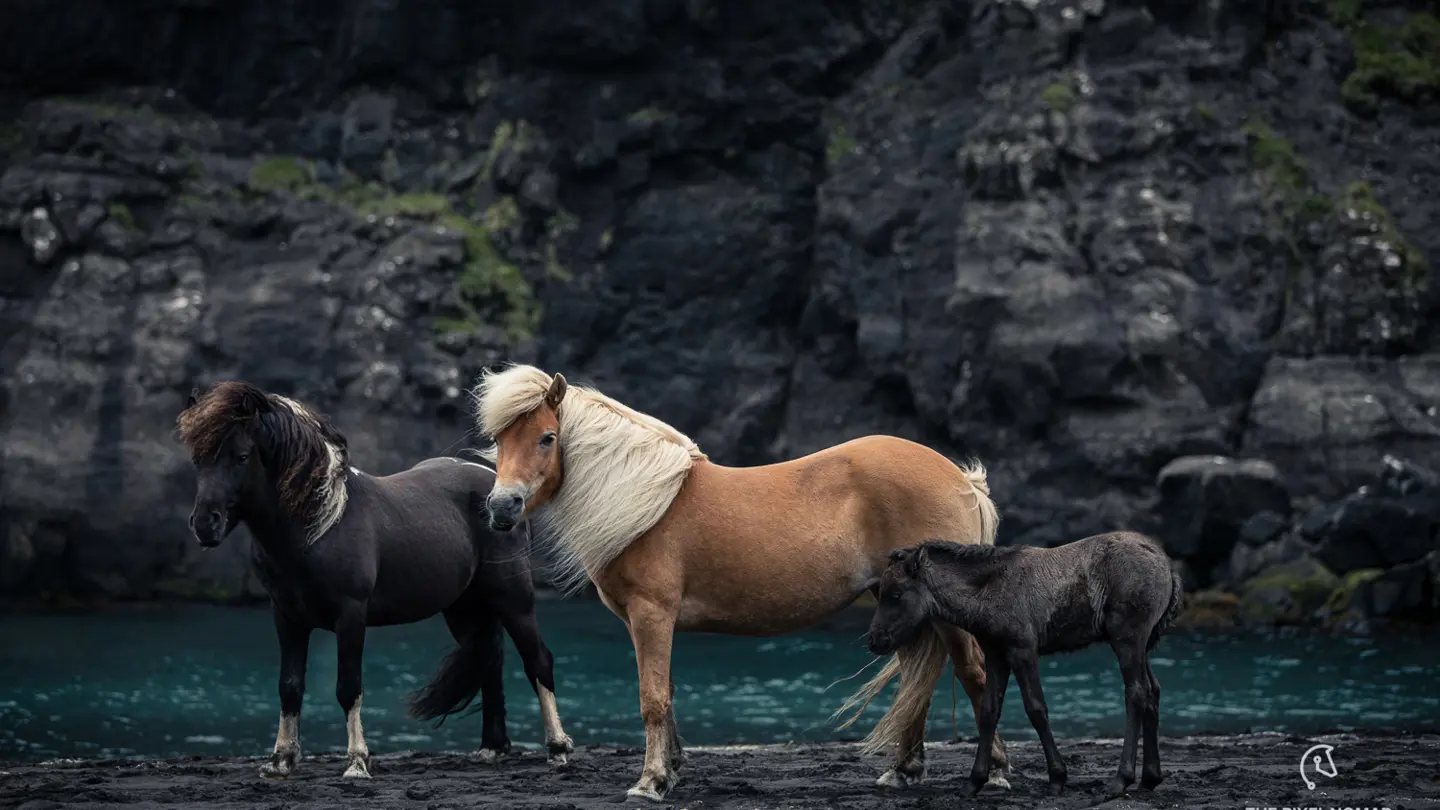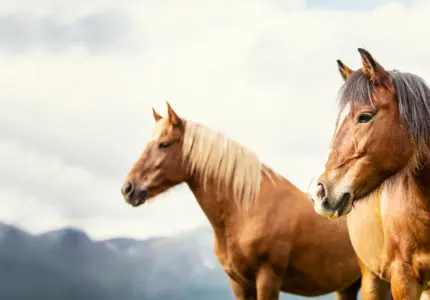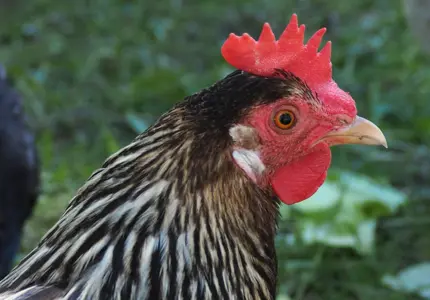
The Faroese Horse
- Home
- Our work
- Farm animals
- Nordic native breeds
- The Faroese Horse
Top photo: Cécile Zahorka, www.thepixelnomad.com
Origin: Faroe Islands
Faroese name: Føroyska rossið
Withers height: Average 122 cm
Colour: Bay, chestnut, blackbrown/brown and pied.
Type: Horses
Offspring: 1
Birth weight: Approx. 27 kg
Number of breeding females in Faroe Islands, 2020: App. 10
Not at Risk – Vulnerable – Endangered – Critically Endangered – Extinct
History
Brought to the Faroe Islands by Norse settlers in the 9th and 10th centuries, the geographical remoteness in the North Atlantic Ocean forced these horses to adapt to its surroundings. Only the horses that could withstand the weather survived and the Faroe Islands became home to a horse breed that was strong, hardy and agile.
These horses were used by farmers for agricultural purposes and occasionally for transport between villages. Most of them lived freely up in the mountains all year and no targeted breeding took place. Exportation of the horses to coal mines in Britain combined with modernization in the agriculture on the Faroe Islands resulted in a breed that nearly went to extinction. In 1978 the association ‘Breeders of Faroese Horses’ (Felagið Føroysk Ross) was established to conserve the Faroese indigenous horse and they have kept the studbook ever since. With DNA testing it is concluded that the Faroese horse is a separate and pure breed. In 2018, the system Føroya Fongur was created, in which online access is provided to the studbook with extensive information about the Faroese horse breed.

Conservation
In the 1960s, there were finally only five Faroese horses left; one stallion and four mares. But then a rescue operation was launched to preserve the horse breed. An export ban for horses was introduced and still applies today. All the horses found in the Faroe Islands today are descended from the five individuals who remained in the 1960s.
Today there are about 90 individuals, of which 70 can be used in breeding – about half in half stallions and mares. Annually around 10 foals are born. However, these numbers are only available through the association Breeders of Faroese Horses. The total population size has only been reported to FAO’s record system, Domestic Animal Diversity Information System, in 2016 and 2017. Other numbers, such as breeding females are not reported. Due to the size of the Faroe Islands, the high interest in the Icelandic horse breed and the lack of exportation license to Faroese-born horses, it is a challenge to increase the number of Faroese horses. The association Breeders of Faroese Horses are working on solutions that include marketing strategies and getting an exportation license. Visit their webpage at www.ffr.fo.

Characterization
Characterization of the breed’s phenotypic traits, genetic diversity and socio-economic importance is essential for conservation. A study by NordGen showed that until 2019 only 4 easily available studies had been conducted. Two of the studies focused on the DMRT3-gene which is associated with gaits, one on the myostatin gene and the last one was a genetic analysis of inbreeding and conservation possibilities. Thus, there is still a huge demand for continued research on the traits and importance of the Faroese horse.
References
Breeders of Faroese Horses (2020). Personal communication.
Kierkegaard, L.S., Groeneveld, L.F., Kettunen, A., Berg, P. (2020). The status and need for characterization of Nordic animal genetic resources, Acta Agriculturae Scandinavica, Section A — Animal Science, 69:1-2, 2-24, DOI: 10.1080/09064702.2020.1722216
Promerová, M., Andersson, L. S., Juras, R., Penedo, M. C. T., Reissmann, M., Tozaki, T., Bellone, R., et al. (2014). Worldwide frequency distribution of the “gait keeper” mutation in the DMRT3 gene. Animal Genetics 45(2), 274–282. doi:10.1111/age.12120.
Viluma, A. (2012). Polymorphism in myostatin gene and athletic performance in Nordic horse breeds. Swedish University of Agricultural Sciences, available at: http://stud.epsilon.slu.se/id/file/2988345
Berg, P., Praebel, A. & Joensen, D. (2013). Inbreeding status and conservation possibilities of the endangered Faroese horse. In Book of Abstracts No.19. Nantes, France, available at: http://old.eaap.org/Previous_Annual_Meetings/2013Nantes/Nantes_2013_Abstracts.pdf#page=504
Staiger, E. A., Almén, M. S., Promerová, M., Brooks, S., Cothran, E. G., Imsland, F., Fegraeus, K. J., et al. (2017). The evolutionary history of the DMRT3 “gait keeper” haplotype. Animal Genetics 48(5), 551–559. doi:10.1111/age.12580.
Read more about our other native breeds
-

Nordland/Lyngen Horse
The first known and documented exhibition where this breed participated, was in 1898 at Lyngseidet in Troms. In the 1930s, organized breeding of Nordland/Lyngen horses started.
Read more about the breed
-

The Nordic brown bee
Honey bees are threatened by intensive agriculture, habitat loss and climate changes worldwide and are important to conserve, not only due to their honey production but also due to their pollination services.
Read more about the breed
-

Finnish Landrace Chicken
In 1974, the agricultural advisory agency collaborated with Seiskari and published a call to find remains of the Finnish landrace chicken. As a result, one flock was found in South-East Finland. This family line was named after its geographical location as “Savitaipaleenkanta”.
Read more about the breed